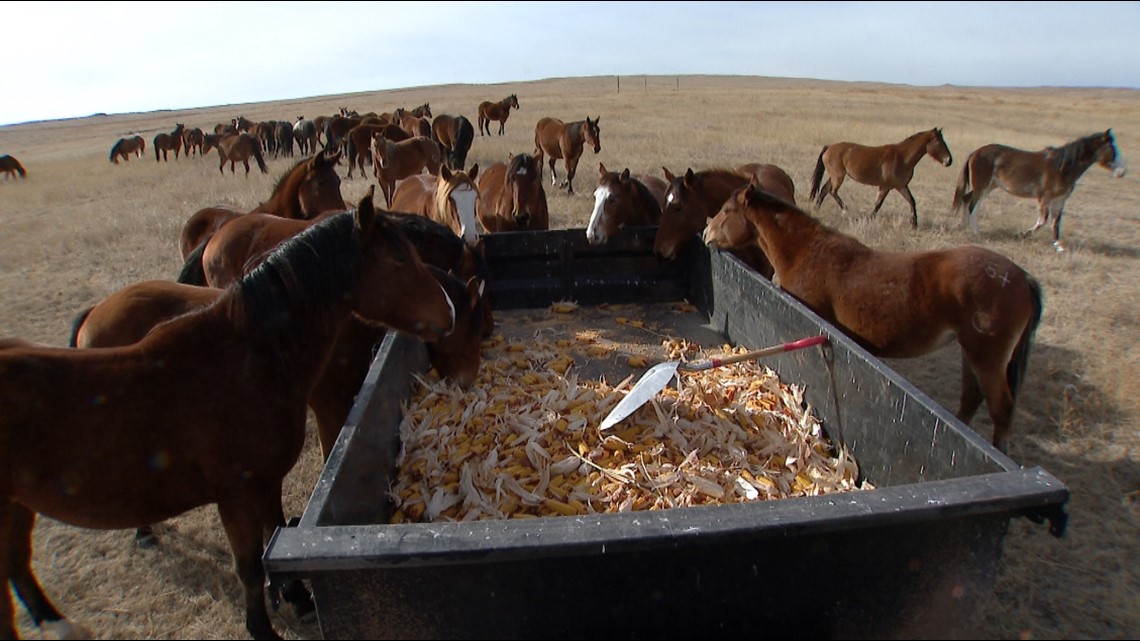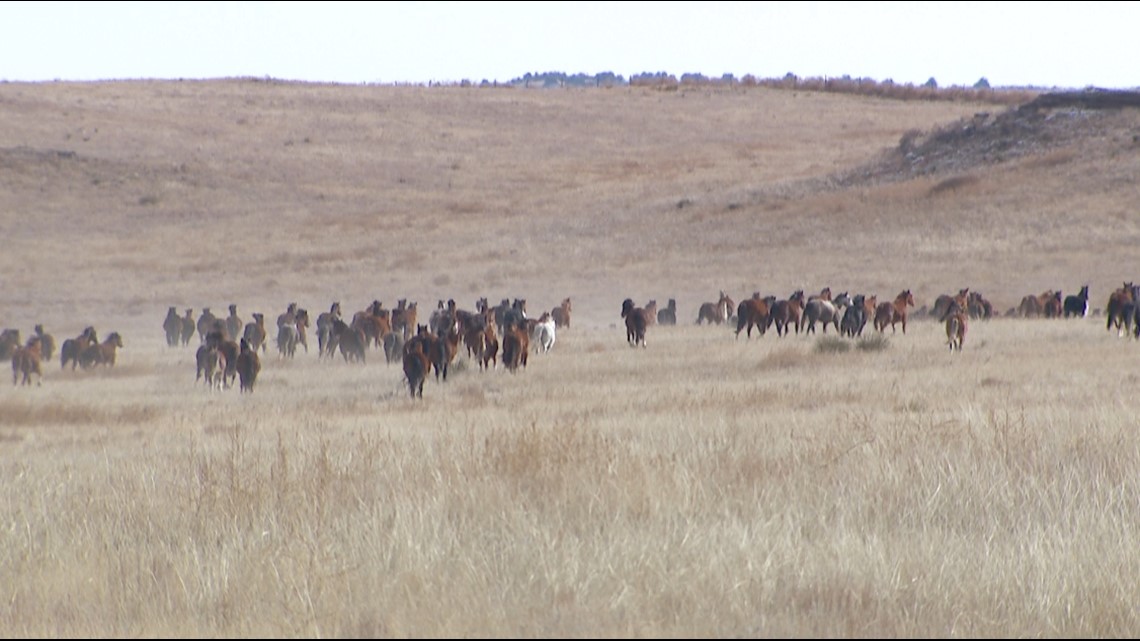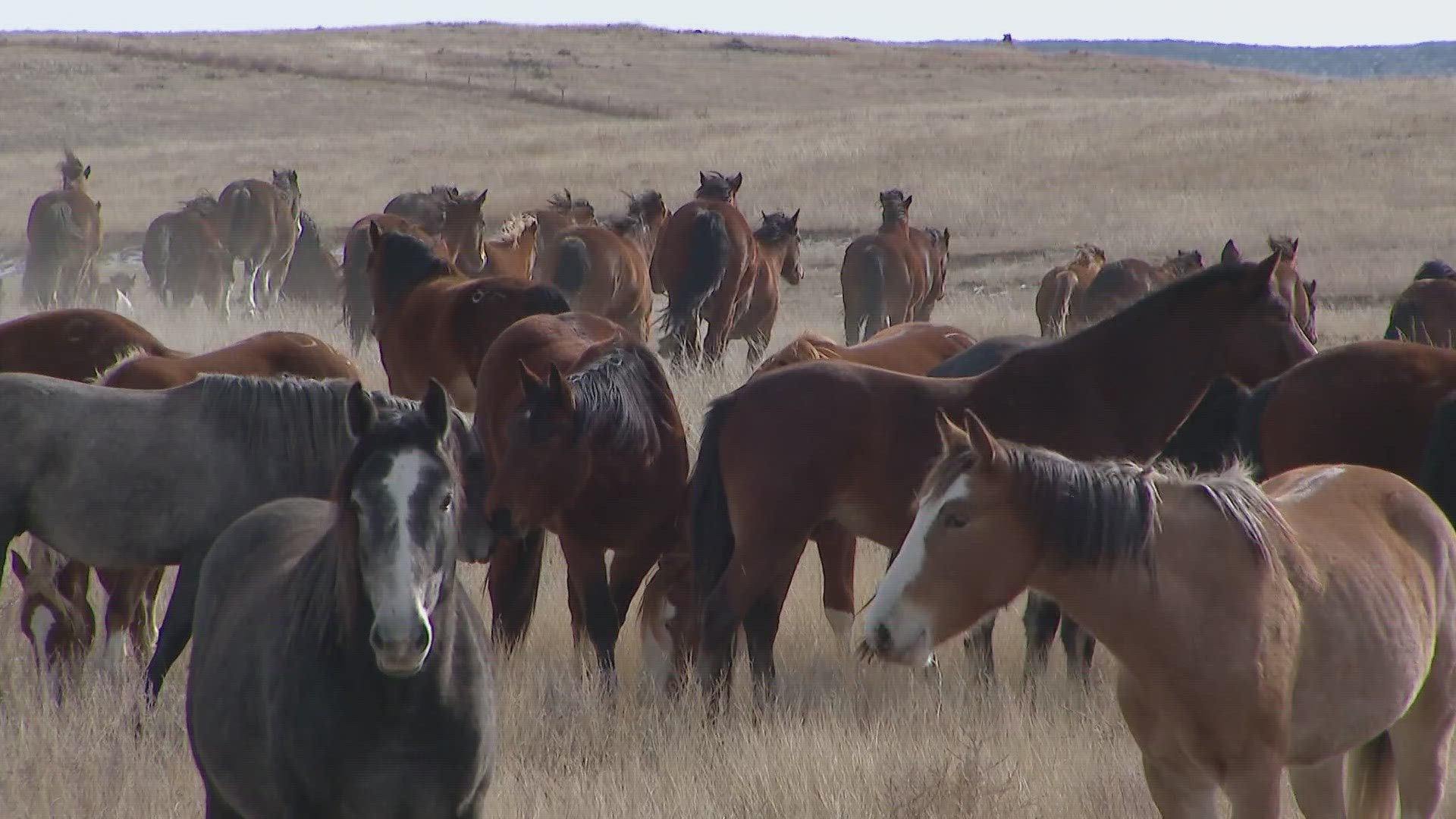STONEHAM, Colo. — The National Western Stock Show has some of the most elite professional rodeos in the world, and the horses featured in the shows are raised right here in Colorado.
But there are a lot of myths about how the horses buck.
"Not all horses that are bred to buck, want to buck," said Binion Cervi.
The Cervi Ranch in Stoneham has been in Cervi's family since 1883. They have nearly 70,000 acres where 900 bucking horses have lots of space to run and roam free.


Born and raised on the ranch, some of the horses go on to be champions, performing at rodeos nationwide, including at the National Western Stock Show.
"A lot of people don't understand where bucking horses come from, but they're specifically bred to buck," Cervi said. "Rodeo originated because people were trying to tame bucking horses."
He said as rodeo grew in popularity, the horses did get tamer. So, they had to learn to breed for bucking.
"That's where the term 'born to buck' comes from," Cervi said.
He said you can't force broncos to buck.
"They've got to want to do it," he said. "There's a myth that the flank strap is around the testicles of a horse. I can debunk that myth so easily because half the bucking horses are females."
He said their animal athletes start performing at age 6 and retire around age 20.
"It takes a lot of time and nurturing to get these bucking horses to the level where they can perform at the National Western," he said.
That's 14 years on the rodeo circuit, but only around 15 to 20 minutes spent bucking throughout each horse's life.
"Bucking horses approximately perform 10 to 15 times at the max a year," Cervi said. "We're talking 8 seconds. So you're looking at 80 to 120 seconds a year."
Riley Haug is the ranch manager.
"People don't realize the amount of time and preparation we put into getting them ready for those 8 seconds," he said. "The nutrition, the medicine, the doctoring, all that, making sure their feed are good."


While he helps the Cervis produce and run rodeos, his main job is taking care of the horses.
"The reality of it is, I spend more time with these horses than I do people," Haug said. "It's not just running horses in and out of the wild and taking them to a rodeo. We're raising them. It's like raising your kids, taking care of them."
Each horse is like one of their own.
"Keep an eye on Binion Cervi. That guy absolutely loves these horses," Haug said. "He cares about these horses. I don't want to say more than anything. They rank right under his wife and kids. I guarantee you that."
When those seconds of bucking comes to an end, these horses have only one job left to do.
"The rest of its time, it's enjoying its life out here on thousands of acres in the Pawnee National Grasslands, [which] is part of this ranch, in its natural environment," Cervi said.
He said some bucking horses perform only once a year. Some want to perform more, and the more they do, the better they get.
If you want to see these horses in action, there are several professional rodeos scheduled at the National Western Stock Show.
SUGGESTED VIDEOS: National Western Stock Show

